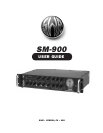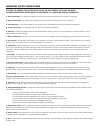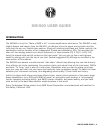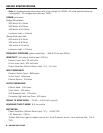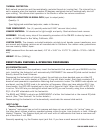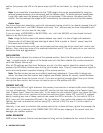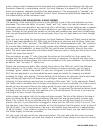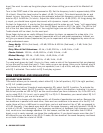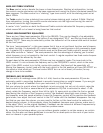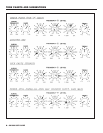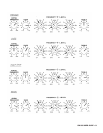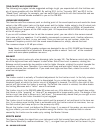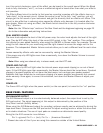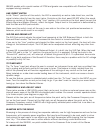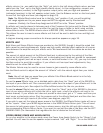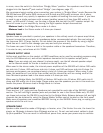
4 • SM-900 USER GUIDE
neither the preamp clip LED or the power amp clip LED are activated, try using the Active input
jack.
Note: If you would like to overdrive the first TUBE stage, this can be accomplished by using an
external preamp between your instrument and the Passive input. To obtain optimum sound when
trying this, make sure the preamp clip LED is not activated. If this occurs, turn down your Gain
control. The first preamp tube stage is NOT monitored by the preamp clip circuit for this reason.
Active Input
The Active input jack should be used with instruments having a built-in (on board) preamp that will
produce signals over 1 volt RMS. Basses with really “hot” pickups may be more compatible with
the Active input. Let your ears be the judge.
If you are using a KEYBOARD or BASS PEDAL, etc., with the SM-900, we have found the best
choice to be the Active input.
Note: Using the Active input with passive basses may result in a loss of high end transients.
Players who roll off their high end starting at about 2kHz or prefer a “darker” sound, may find
this input more to their liking.
If you hear some distortion with your active bass and are using the Active input jack, check your
battery. Also, make sure none of the overload indicators are lit. This will save you or your service
technician time and aggravation.
GAIN CONTROL
The Gain control adjusts the volume of the preamp section. Since the Gain control is similar to a
“pad,” a small amount of signal will be heard even with the Gain rotated fully counter-clockwise
(with the Master Volume up).
After all EQ settings and the Aural Enhancer are set, the Gain control should be raised until the
preamp clip LED barely flashes upon striking your loudest note. This will insure maximum signal-to-
noise ratio and prevent unwanted clipping of the preamp section.
Note: The Gain control serves as an effects send level adjustment. If your effect is being over-
driven, turn down the Gain control and re-adjust your Master Volume for correct, overall loudness.
This control also drives the Limiter circuit. If you are not getting enough effect from your limiter,
turn up the Gain control, but be sure to keep an eye on the preamp clip LED.
PREAMP CLIP LED
The preamp clip LED will light whenever the preamp, tone section or output buffer reach clipping
(run out of headroom). This function does NOT monitor the first tube stage of the Passive input
(see “Passive Input” above for more info). In the event the clip indicator lights, turn down the Gain
control. Since this circuit monitors all three tone sections (bass, treble, EQ 1 and EQ 2) indepen-
dently, boosting any one of these controls can cause the LED to activate. (In the case of EQ 1 or
EQ 2, even with the unselected EQ bank.) So, for instance, if you notice the preamp clip indicator
lighting, but hear no distortion and are using EQ 1, switch to EQ 2 to see if it is the culprit (or
vice-versa).
Naturally, if you want to overdrive the preamp section for a distorted tone, ignore the preamp clip
LED, but, be very cautious of the POWER AMP CLIP LED as any clipping at this power level can
damage your speaker system.
AURAL ENHANCER
SWR's Aural Enhancer Control was developed to bring out the fundamental low notes of the bass



